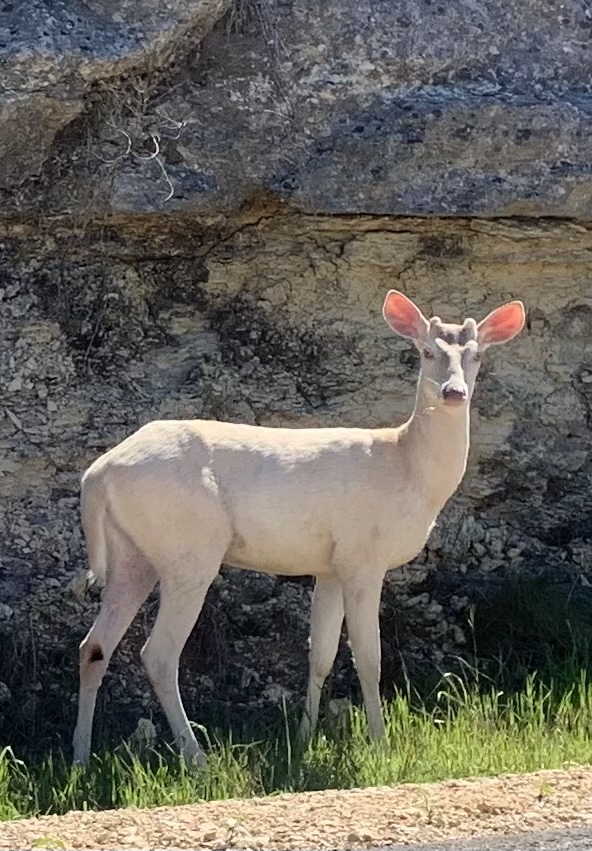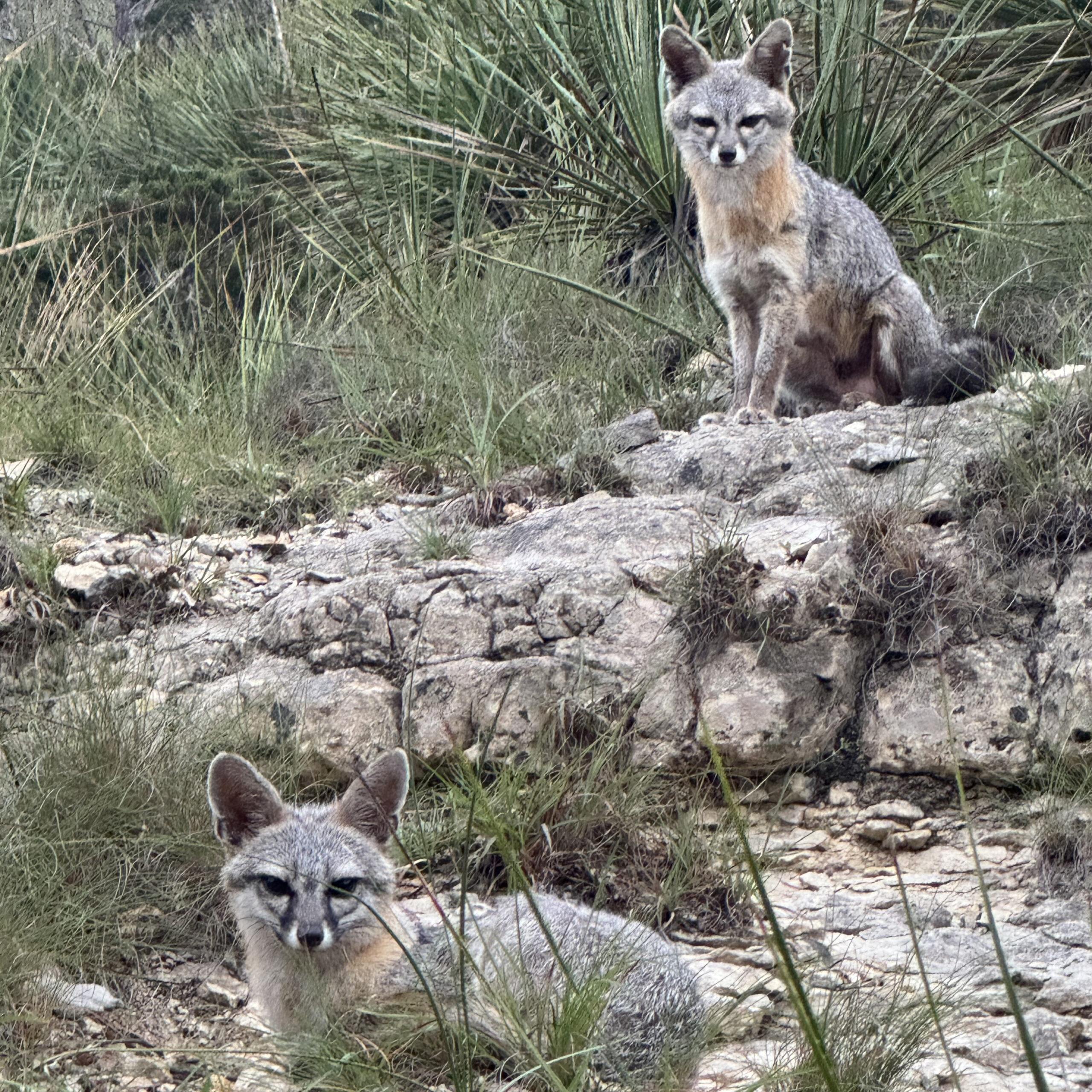On The Land
Protecting Land-Dwelling Wildlife in Comal County, TX
Comal County is home to a diverse range of land-dwelling wildlife, from the forests and grasslands to the rocky hillsides. These land-dwelling species are integral to our local ecosystems, contributing to the ecological balance and overall health of our environment. Some of these species also contribute directly to our local economy in the form of agritourism. Here’s a closer look at some key land-dwelling species in Comal County and the threats they face.

Key Species in Comal County
Bobcat: A medium-sized wild cat, the bobcat is an elusive predator that thrives in Comal County’s diverse habitats. It plays a crucial role in controlling rodent populations. Main threats are habitat fragmentation, vehicle collisions, and human-wildlife conflict, especially in areas where they’re perceived as threats to livestock.
Coyote: These highly adaptable canines are common in Comal County. Coyotes play a crucial role in controlling rodent populations and are known for their distinctive howls. They’re opportunistic omnivores, feeding on small mammals, fruits, and carrion. Threats include human-wildlife conflict habitat fragmentation, and vehicle collisions,
Grey Fox: This small canine is notable for its ability to climb trees, a rare trait among dogs. It’s an omnivore that helps control rodent populations and disperse seeds. Habitat loss, vehicle collisions, and competition with coyotes in urban areas pose threats. They’re also sometimes targeted by hunters or ranchers.
Mountain Lion: Also known as cougars or pumas, these large cats are rare but present in Comal County. They play a crucial role as apex predators in maintaining ecosystem balance. Habitat fragmentation, human encroachment, and conflict with ranchers are major threats. They require large territories, making them vulnerable to habitat loss.
Nine-banded Armadillo: This unique mammal is known for its leathery armor and its ability to burrow. It’s commonly seen foraging for insects and grubs. These animals face threats from vehicle collisions, habitat loss, and sometimes persecution as perceived pests in urban areas.
Porcupine: These spiny rodents are primarily nocturnal and arboreal. Their presence in an area often indicates healthy forest ecosystems. Threats include habitat loss, vehicle collisions, domesticated dogs, and sometimes persecution by humans who view them as pests damaging trees.
Raccoon: These nocturnal mammals are highly adaptable and intelligent. Their distinctive masked faces and dexterous paws make them skilled foragers in both wild and urban areas. While adaptable, they face threats from vehicle collisions, conflict with humans in urban areas, and diseases like canine distemper.
Roadrunner: This fast-running bird is not just a cartoon character but a real resident of Comal County. It’s known for its speed and ability to catch and eat venomous snakes. Urbanization and habitat loss are primary threats. They’re also vulnerable to pesticides used on insects and rodents they prey upon.
Texas Horned Lizard: This iconic reptile, also known as the “horned toad,” is recognizable by its flat body and crown of horns. It primarily feeds on harvester ants and is a protected species in Texas. Threats include habitat loss due to urbanization, pesticide use reducing ant populations, collection for the pet trade, and competition from imported fire ants.
Texas Tortoise: This land-dwelling reptile is the only native tortoise species in Texas. It’s well-adapted to arid environments and plays a vital role in seed dispersal. Habitat loss, road mortality, and illegal collection for the pet trade are significant threats. Climate change may also impact their arid habitats.
White-tailed Deer: A familiar sight in the county, these graceful animals are important herbivores that help shape the local ecosystem through their browsing habits. Overpopulation in some areas leads to habitat degradation. They also face threats from vehicle collisions and loss of habitat due to urban expansion.
Threats to Land-dwelling Wildlife in Comal County
- Habitat Loss and Fragmentation: Urban development, agriculture, and land clearing reduce the natural habitats available to land-dwelling wildlife, leading to population declines and increased human-wildlife conflicts.
- Invasive Species: Non-native plants and animals can outcompete native species for resources, disrupting the balance of our ecosystems and negatively impacting native wildlife.
- Pesticides and Pollution: Chemicals used in agriculture and landscaping can poison land-dwelling species and reduce their food sources, impacting their health and survival.

Photography Credits – Banner: Dan Tharp, Deer and Foxes: Tera Weiss
